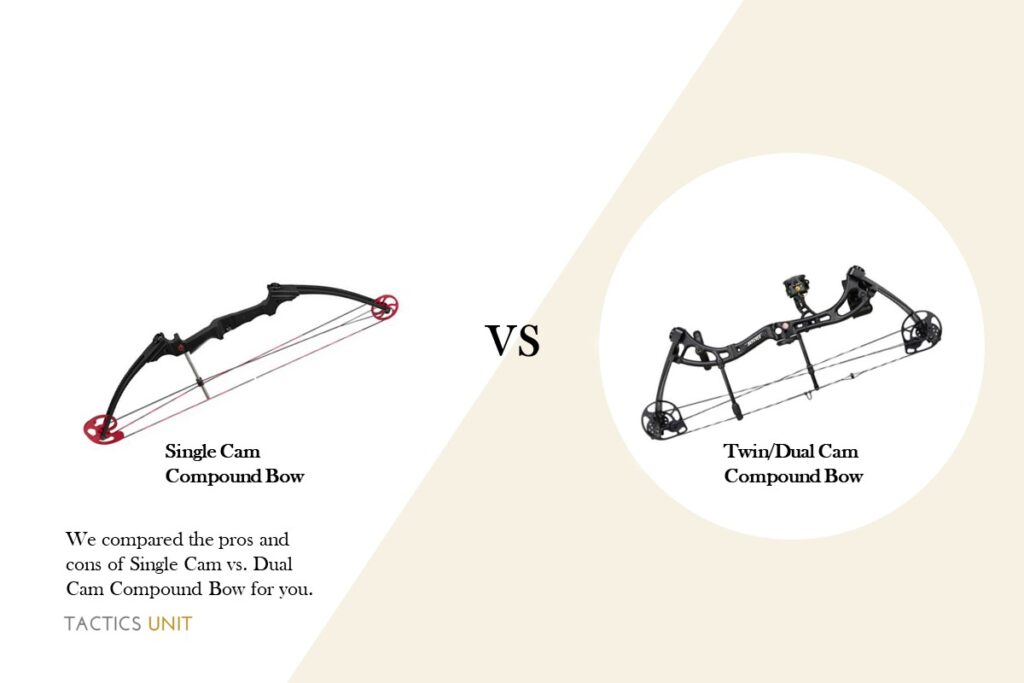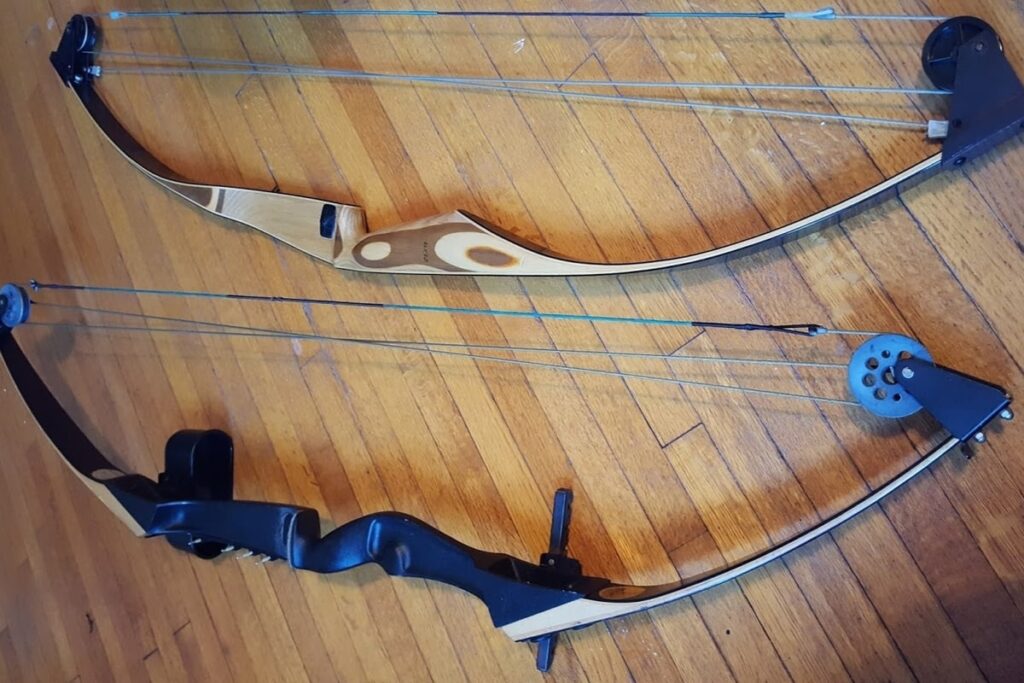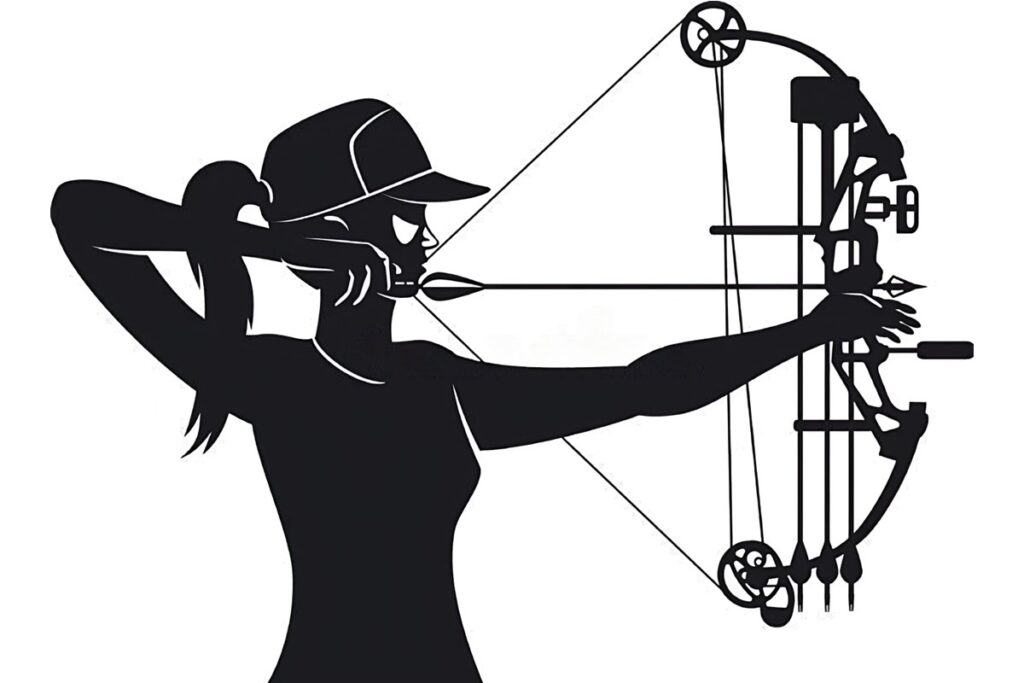For many years now, the two most popular types of compound bows have been single cams and dual cams. The latter has been around for a long time but still isn’t as common as its older brother, with only one exception—hybrid.

These days, there’s also another type known as binary, which offers some very interesting features that will be discussed later on in this article. But first, we’ll take a closer look at all these different kinds of compound bows to help you choose between them.
After that, it’s up to you to decide whether you prefer using a single cam or dual cam compound bow. Finally, we’ll round off with an alternative called ‘binary’ because it combines some unique elements into one design.
Let’s get started!
Single Cam vs Dual Cam Compound Bow: Which Is Better?
Each type of cam bow has advantages and disadvantages. Quiet and ease of maintenance are some of the single cam compound bows’ strengths. Twin cam bows, on the other hand, are more accurate and shoot arrows considerably more quickly.
Single Cam Compound Bow
A single-cam bow uses one moving part, usually known as the power arm or power bow arm (PBA), while the rest of the parts stay put. This gives the archer much better control over where the arrow travels once released since there aren’t any extra components floating about that could interfere with the trajectory of the arrow.
Sound
In addition, the speed of the PBA varies according to the amount of force applied when shooting arrows. To compensate for this, an adjustable pulley system must be employed. Therefore, the overall result is a quieter, smoother bow compared to dual cams but without sacrificing accuracy.
Tuning
It may seem like this makes the bow simpler than a dual-cam one, but actually, the opposite is true. Because of fewer moving parts, single-cams require greater tuning. Their performance can vary greatly depending on the length and draw weight of the string used.
In order to maintain optimum precision, single-cam compounds should not be tuned too aggressively, otherwise, the limbs will become stiff and difficult to bend. On the contrary, if left alone, a well-tuned dual cam will continue working smoothly even after hundreds of shots.
Dual Cam Compound Bow
The basic design of dual-cam compound bows consists of two separate units: the upper limb and lower limb, connected by cables. Each unit contains a set of cams made out of light yet strong fiberglass material. They move back and forth within certain limits, thus creating a powerful energy transfer for faster arrow acceleration.
Versatility
Just like single cams, dual cams also require regular maintenance and fine adjustments in order to achieve maximum efficiency. Due to their versatility, however, they tend to outperform single cams. For example, a good setup of dual cams allows for various modes of operation, such as the full draw and half-quarter draws, allowing you to adapt the bow to whatever situation you find yourself in.
Durability
Another advantage is that, unlike single cams, dual cams don’t affect the velocity of the arrow significantly, making them ideal for low velocities. Their construction is relatively simple and easy to produce, resulting in cheaper models. As far as durability goes, the lifespan of dual cams tends to exceed that of single cams.
Despite being slightly heavier, they usually last longer and perform better under extreme conditions. One thing to keep in mind, though: if the cable breaks on either side of the joint, then you won’t be able to activate one of the cams anymore.
Cost
There’s no doubt that the twin cam system offers superior quality and reliability, especially when high speeds are required. However, due to their complexity, they’re often harder to manufacture and therefore costlier.
More Comparison Between Single Cam and Dual Cam Compound Bows

| Features | Single Cam | Dual Cam |
|---|---|---|
| Noise | Quiet | A bit noisy |
| Maintenance | Effortless | Not easy |
| Speed | Fast | Faster |
| Accuracy | Good | Better |
| Density | Heavy | Light |
| Back Wall | Sturdy | Sturdier |
| Stability | Stable | More stable |
Stability
When comparing dual-cam and single-cam compound bows for stability purposes, it’s important to understand that dual-cam compound bows have two cams that work together in order to achieve stability, while single-cam bows have only one cam which is responsible for locking the limbs together.
The additional stability provided by dual-cams allows for greater stability when shooting at an angle. In addition, dual-cam compound bows are often more stable than single-cam bows because they have a larger surface area in which the string can wrap around, thus preventing the bow from getting out of balance.
Portability
Furthermore, dual cam compound bows tend to be lighter than single cam bows, but that’s not always the case since dual cam bows tend to weigh more than single cams due to the additional parts and materials needed in order to make them work well.
Density
That said, dual-cam bows usually have less material in them, and this can translate into the bow being faster. This usually happens when the bows are made of fiberglass since they’re less dense than wooden bows.
If you’re looking at a dual cam compound bow that’s made out of plywood, then you won’t get as much of an advantage from a lower density as you would with a bow made out of fiberglass, since plywood is much denser than fiberglass.
Size
One advantage of dual-cams is that they can be made smaller. In fact, you’ll notice that some of the smallest single-cam compound bows out there are dual-cams. This is because the two cams are symmetrical and thus can be put together with less material than a single cam.
Overall Experience
I’ve had my share of bowhunting, and I can say from personal experience that a dual cam compound bow will beat a single cam one every day of the week if you know how to tune it properly.
A twin cam will always be faster, and easier to pull back and shoot more accurately than a single one. It’s kind of like saying an automatic gun beats an old manual one every time. You get what you pay for, and that’s just what happens in a lot of cases.
The worst-case scenario would be having the cam come loose in your hand while shooting at full draw, and I can say that would be very hard to do with a single cam because there would only be one point of contact between your hand and the string rather than two.
If you are a new hunter or just starting out, you can get by with a single cam bow. However, once you start to get more experience and know-how to tune your bow properly, the double-cam compound bow will beat the single-cam every time. This is because the twin cam has two cams that can be raised or lowered independently of each other.
Ease of Use
However, if you are just getting into bowhunting, or just want something that is easy to learn and shoot accurately, then the twin cam might be easier for you to handle. If you are in a hurry to kill a deer or elk (or whatever) and don’t have time to spend trying to get the bow to tune perfectly, then go for it. Don’t let anyone tell you otherwise.
Other Types of Compound Bows
Hybrid Cam Compound Bows
Hybrids are basically combinations of single- and dual-cam designs. Generally speaking, they combine the advantages of both types of cams in terms of simplicity, affordability, and longevity. However, hybrid cams have some drawbacks.
Weight
First of all, they usually weigh considerably more than dual cams, meaning that they pose a greater burden to weaker users. Secondly, because of all the additional hardware involved, hybrids generally suffer from higher noise levels. Nevertheless, despite having several disadvantages, I personally consider hybrids to be highly practical, versatile, and reliable.
Price
Now let me tell you something important. When picking out the right compound bow, price shouldn’t play a role. You might think that buying cheap means saving money, but that really depends on a lot of factors, including materials, labor costs, and more.
So, you’d be surprised to see just how expensive a decent bow can be sometimes. A good rule of thumb would be to aim under $1,500 compound bows unless you intend on shooting competitively.
As mentioned earlier, there are four major types of compound bows hitting the market, and they all bring something special to the table. Now I’m going to share my personal opinion on the binary cam compound bow.
Binary Cam Compound Bow
This invention was created by combining the best aspects of multi-cam compound bows and single-cam ones. Its primary goal is to provide increased stability and consistency in your shot placement. Additionally, this device enables you to shoot at varying angles, even straight ahead.
Cam Lock
What’s more, it maintains great balance throughout your entire range of motion. All of this is made possible by a technology known as “Cam Lock.” Basically, Cam Lock keeps everything balanced inside the bow through the application of friction forces. In essence, it works similar to brakes. With the aid of a locking mechanism, the cam stays locked in place even during recoil.
It seems pretty cool, doesn’t it? Well, it gets even cooler. Not only does this particular model come equipped with a safety release feature, but it also provides an automatic self-arrest function. Meaning, once you’ve drawn the trigger, it automatically releases itself, preventing possible injuries.
Who It’s Made for
Moreover, this product comes with a sleek, compact design that leaves plenty of room for modifications. Lastly, it weighs approximately 4 lbs, making it suitable for people who enjoy outdoor activities such as hunting and hiking. Unfortunately, its price tag is rather steep ($1,349).
This version was created with women in mind. Unlike men, female athletes typically lack sufficient strength to pull heavy weights, so why not give them a helping hand with a lightweight, portable device capable of generating up to 300 lbs of torque?
According to experts, this type of bow has revolutionized the industry and brought top-notch results to countless sports enthusiasts. It’s incredibly durable and boasts exceptional functionality, making it perfect for beginners and intermediate shooters alike.
Some Tips on Using Compound Bows
Compound bows have become a favorite among archers because of their ability to provide consistent accuracy and power. They are also incredibly versatile, allowing you to adjust the draw weight and draw length to suit your needs.
No matter what kind of bow you use, choosing the right one can be a challenge. With so many different models available, it can be hard to know which one is best for you. If you’re looking for the best compound bow for beginners, we’ve compiled this guide with some helpful tips that will help you make an informed decision.
The most important component that determines the precision of a bow is the riser. The riser is what connects the bowstring to the arrow. If you are not able to adjust it well, then you will not be able to shoot your arrow accurately.
You Need a Riser and a Stabilizer
In order to be able to shoot an accurate arrow, you need a riser that is straight and level. In addition, there should also be a bow stabilizer in your case if it has one. This stabilizer will keep your bow from swaying while you are shooting and also help with keeping it steady when you are holding it upside down or at an angle.
Adjust the Tension of the String Properly
The tension of the string should be adjusted properly as well in order for your arrow to fly true when fired, which means that the amount of pressure required to pull back on the string should be just enough so that there is enough tension on the string without straining too much. When determining this amount of pressure, look at how far back on your hand or arm you can extend it.
Wrap Up
As with all things, it depends on what you want to do. If you are going to be out in the woods for a while and just want a quick draw, then the twin-cam will work well for you. If you are going to be out for several days or weeks and want accuracy at all times, then go with the single-cam.
There’s no real advantage to one over the other in my opinion, but I do think that there is an advantage to having two cams instead of one if you are not used to shooting compound bows or bowhunting. I hope you find this information useful and informative.
Remember that choosing the correct compound bow is crucial for maximizing your potential. Keep in mind that not everyone needs a super fancy, ultra-advanced bow. Instead, focus on finding a product that suits your budget and skill level. And remember that practice makes perfect. Good luck!
We hope you enjoyed reading this article. If you wish to obtain further related content, check out our website below.

